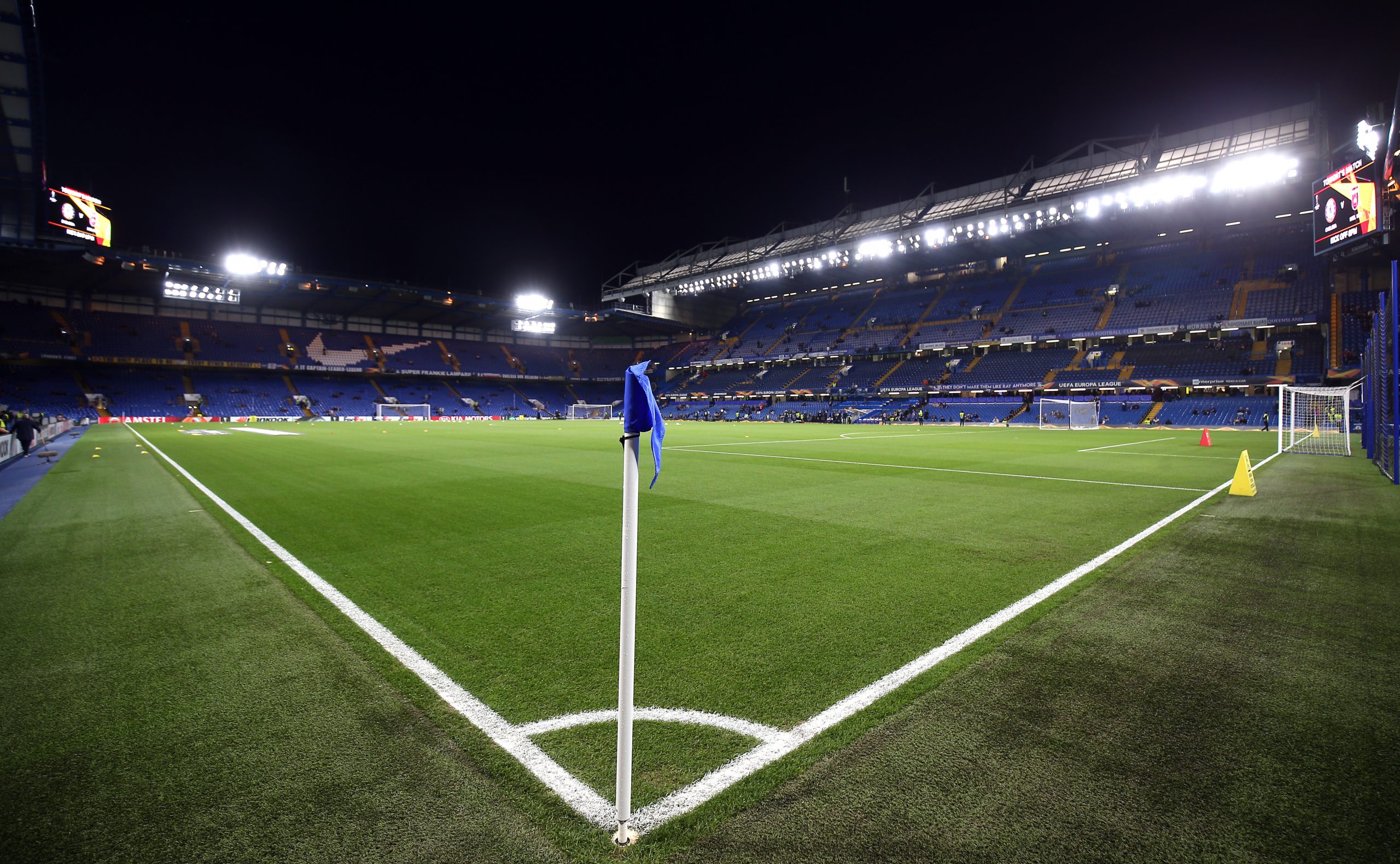The major question surrounding Chelsea this season was how long it would take Maurizio Sarri to have Chelsea play the type of attacking football that helped Napoli turn into Serie A contenders under his watch. Could he successfully translate his possession based style, based on synchronized movements and a manipulation of space, to the Premier League? The early returns have been promising. There have been moments where Chelsea have approached Napoli's level of automation in attack, faithfully copying the patterns of one of the more exciting sides in recent memory. Chelsea have only gotten to that peak version of themselves in spurts though. While they've been able to generate shots at a high level, their expected goals per shot from open play is less than 0.10 through nine games is indicative that their attack isn’t quite humming at its peak.
While what’s gone on with Chelsea in open play will ultimately decide whether they're a solid team or something closer to great, an interesting subplot has been what's gone on with their set pieces on the attacking front. On the surface, scoring two goals through nine games from dead ball situations isn’t anything special, but a closer inspection shows that Chelsea have been really productive in this department and to this point, that's been their best avenue in creating high quality chances.
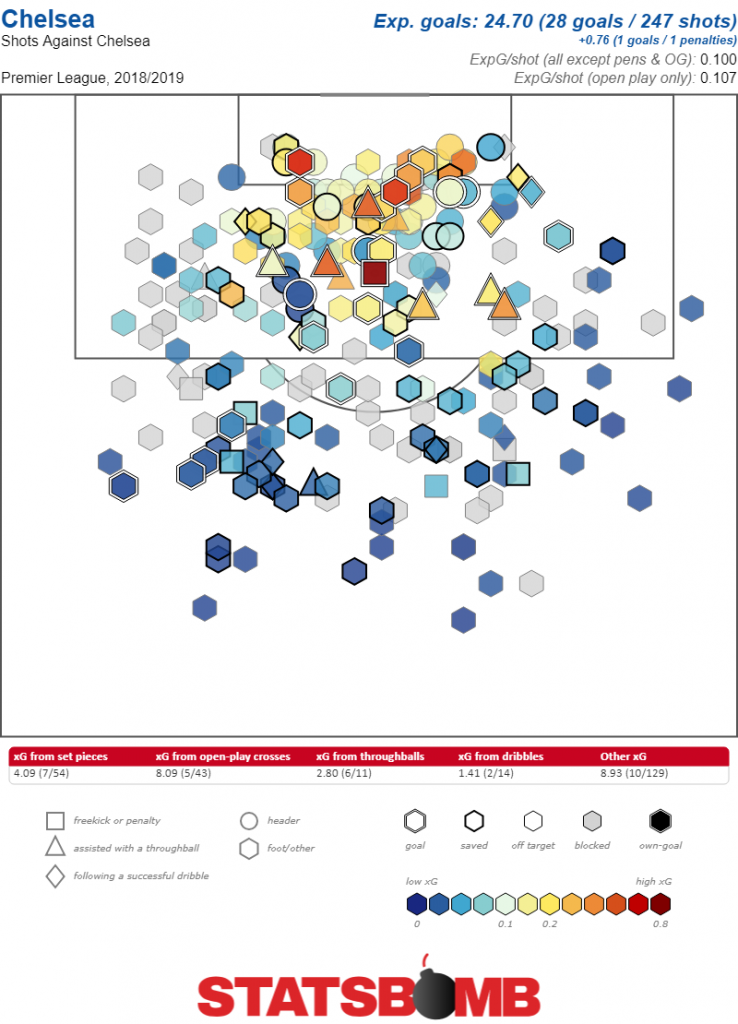
It's fair to be skeptical of Chelsea's ability to maintain this level of production for the rest of the season. Not a lot of teams in general are able to go an entire season taking 125 or more shots with an xG per shot at 0.12 or higher. Sarri teams haven't been this good at generating scoring chances over the past few years, and in only two of his five seasons in Serie A (2014-15 with Empoli, 2017-18 with Napoli) did a Sarri led side produce an ample amount of goals from set pieces. But the fact that we've basically reached the quarter pole of the league campaign and Chelsea have been prolific in chance creation from set pieces should warrant a further investigation as to how they've been able to do it this season and the mechanisms behind their early season success.
A lot of Chelsea's work during corner kicks involves setting picks for teammates to lose their marker and get them open for headers, especially when there's a looping run from the far post to the center of the box. The usage of picks during corners isn't a novel concept and we're starting to see more and more sides use pick plays to help a teammate generate momentum during their runs and attack open space. England, for example, relied heavily on this tactic during the World Cup. Of course, you also need proper spacing so there isn't a jumbled mess in the middle of the box once the corner is delivered.
You can see below two examples of Chelsea corners from the right side where they have a pick being set for a runner to get into the center of the box for a header. The second example versus Manchester United was especially good because the other elements in their routine worked considerably better than it did in the example against West Ham. Mateo Kovacic makes a run to the near post to occupy two United players. Alvaro Morato drags his marker with him to the center-right area along with Marcus Alonso making a run to the far post and taking his man with him. That opens the middle for Antonio Rüdiger to get into the open space because of miscommunication between Paul Pogba and Victor Lindelöf on potentially switching the assignments following the pick, and a headed goal is the result.
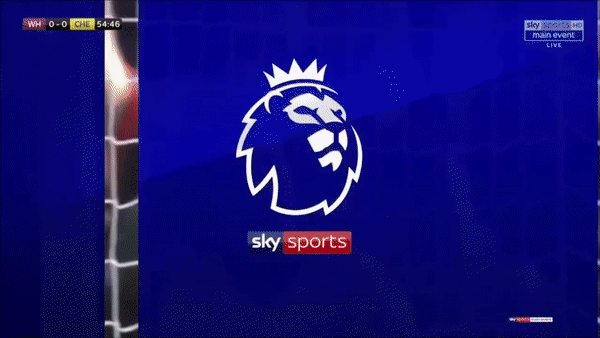
Chelsea have an alternative plan during corner kicks which involves crowding the goalkeeper by sending a bunch of players to the near post and creating havoc. David Luiz will peel off to the far post and take his man with him. At times, Rüdiger will start at the far post and come all the way to the near post to add to the number of Chelsea players trying to make it hard on the opposition keeper. This hasn't been as successful a routine as the one above, but you can see the logic, you can either get a header at the near post and the keeper has next to no chance of saving it, or a headed flick for the back post if Luiz wins his individual duel.
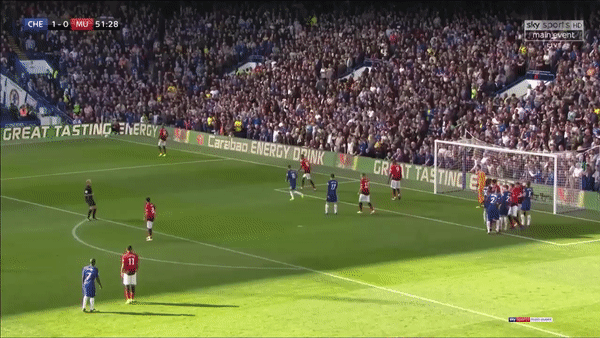
Chelsea will also go short on occasion, and they had this nice play against Bournemouth that caught them napping and nearly ended in a goal. Hazard retreats quickly to Willian, the corner taker, and does a quick 1-2 with him to give him a better opportunity at delivering a hard pass into the six yard box. Luiz darts into the six yard box from the top of the penalty area and goes near the post. While that's going on, Morata peels off to the far post just in case the ball gets there and he can tap it in. While this ultimately led to nothing, it's the type of play you might be able to get away with using again later on in the season.
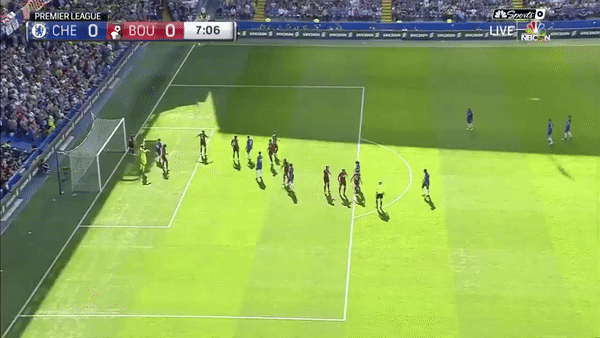
The video drives home just how reliant Chelsea are on picks for their set pieces. It's not just for corner routines, but you'll see this as well during free kicks. The example below is probably the most explicit example of a pick being set. David Luiz makes a curling run from the far post to the center of the box and his marker gets held up, a lot like what happens during corners. If the ball by Willian was better, it could've led to a half-decent shot attempt.
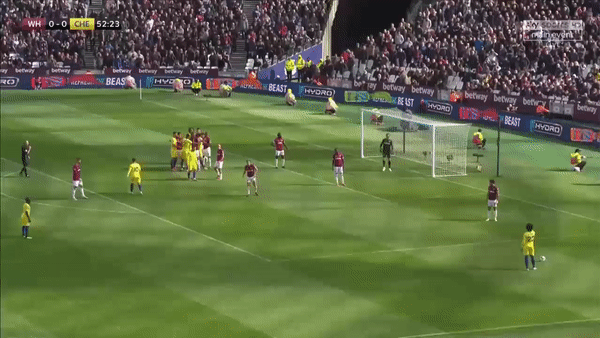
It's interesting looking at what Chelsea do during free kicks that are further away from the box. They like to have a player start his positioning just a bit further back from the initial line, and then dart to the wide areas of the box. While that's going on, one of the players within the line will get to the other side of the net for potential close range shots. The tap in for Ross Barkley against Southampton was notable because it once again showed the value of using picks during set piece routines. As Giroud starts his run, his marker is late to recognize it and when he tries to catch up, he runs right into Luiz and Giroud is wide open in the box.
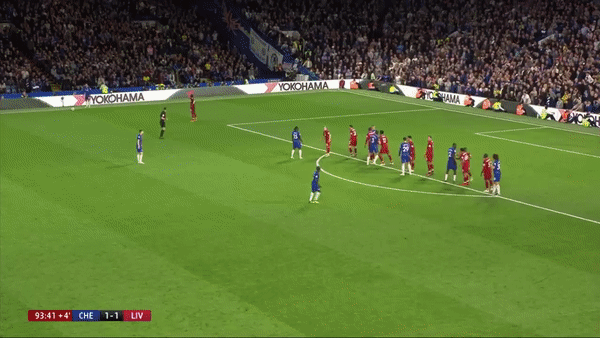
Chelsea probably won't end up finishing the season with the over 20 xG and more than 150 shots that they're currently on pace to achieve. That would be a ridiculous level of output from set pieces in a single season. Leicester City were perhaps the best Premier League side last season in generating chances from set pieces and their xG output of 16.38 on 127 shots would look small in comparison to what Chelsea are doing.
It could very well be that teams get smarter and snuff out the things that Chelsea are doing during their routines, particularly with better communication and switching during man-marking alignments if teams continue to set-up their defense in that fashion. But even with the likely decline in production, Chelsea stand a real chance of finishing as one of the best three to five clubs in the league this season in generating chances from set pieces.
That would be a real bonus for a team that's been dealing with the struggles of having to adjust to a style of play that's different from previous managers. It'll be interesting to see if set pieces remain Chelsea's best avenue to creating high quality chances.
Header image courtesy of the Press Association
